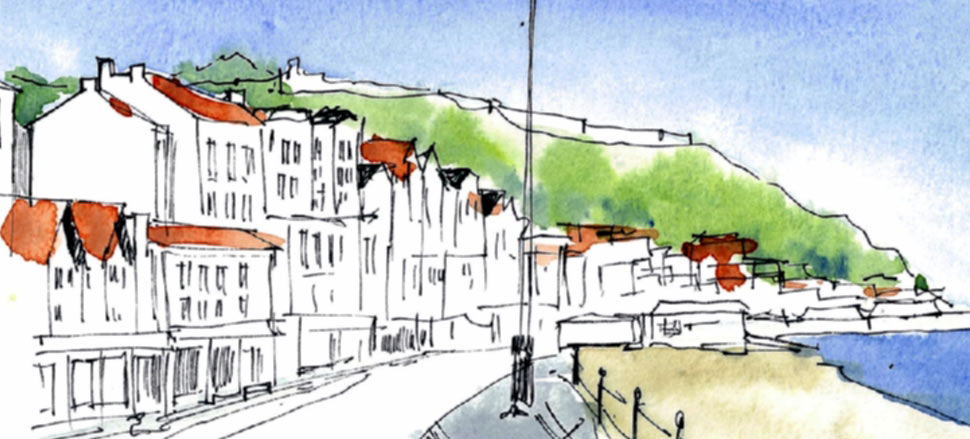 An index of Transactions and a dialect survey
An index of Transactions and a dialect survey
The Survey of Yorkshire Dialect (SYD)
The Yorkshire Dialect Society would be delighted if you could help us with our dialect research. Please read the following and, if you would like to help, download, complete, and return the Survey collecting slips and questionnaires to the address below.
As part of the celebrations marking its Centenary in 1997, the Yorkshire Dialect Society launched a survey which aimed to collect dialect from all parts of Yorkshire. This initiative, the Survey of Yorkshire Dialect (SYD), provides an opportunity for members of the Society, and all those who know and love the county and its speech, to make their own individual contribution to the recording and preservation of the wealth of dialect from all three Ridings. For the purposes of the Survey, all parts of the present and former county of Yorkshire are included. The results of the initial phase of the Survey were published in Yorkshire Words Today (1997), which is available from the Society. The first phase of the Survey was a co-operative project undertaken by the Society and the National Centre for English Cultural Tradition at the University of Sheffield.
After the publication of the initial results in 1997, members of the Society and the general public have continued to contribute material. This has prompted the launch of the second phase of the Survey, which aims to collect information on all aspects of dialect throughout Yorkshire. This will be undertaken by the Society in partnership with the Centre for English Traditional Heritage. We are interested not only in the traditional dialect of rural areas, but also that of towns and cities, which have been largely neglected in previous surveys. To give a full and balanced view of the dialect as remembered, known and used today we need to spread the collecting network as widely as possible. The speech of young and old, male and female and of all social levels will therefore be included. The dialect used by women and younger people, both in rural and urban areas, has received comparatively little attention in the past; the Survey offers a means of redressing this balance.
Many of us are aware of the sweeping changes which have taken place in all aspects of the English language over the past hundred years or so. While there has been a huge increase in scientific and technical vocabulary in the standard language, the regional dialects have seen many of their colourful words and expressions decline, both in number and variety. This is hardly surprising, considering the impact of technology on agriculture and the fishing industry, for example, not to mention the disappearance of so many of the handcrafted trades and their traditional work processes, whether in the countryside or in urban areas. The erosion of the vocabulary in such spheres of activity is an inevitable result of the increasingly rapid pace of change within culture as a whole. Although many of us may regret these losses, we can all play a part in making a permanent record, not only of pronunciations, words, expressions and other usages which are passing out of use, but also of new ones which are coming into the language at this time. If such forms as ahent (near), asker (newt), cush (call – to cows), entire (stallion), forwadden (infested), mazy (giddy), skell-boose (partition in cowshed etc.), slape (slippery), spice (sweets), sprottle-footed (splay-footed), toad-slather (frog-spawn), yoon (oven), are in danger of being lost, others such as the best thing since sliced bread, one sandwich short of a picnic (and its variants), snecklifter (the first drink of several etc.), teeming and lading (moving money from one account to another), are establishing or re-establishing themselves, often in a wider context. Our greatest challenge is to monitor and record these changes as they are taking place.
The Survey uses several methods of gathering data, including the following:
1. A specially-designed collecting slip on which a single item can be written, together with relevant background information. A sample of the slip can be downloaded here.
2. A collecting form, on which a number of items can be written, all from the usage and/or memory of the same individual or source, together with relevant background information.
3. Questionnaires aimed at collecting a range of dialect words, expressions and other usages. A copy of the questionnaire can be downloaded here.
4. Lists of words and expressions on which an indication can be given both of forms known/remembered and of those in active use.
5. Recordings of dialect speakers on tape, disk, etc., together with background information, to provide firsthand evidence of pronunciation and usage from all parts of Yorkshire.
All material contributed to the Survey will form part of the Society’s named special collection, deposited in the CETH archives. The material will be made available to members and to others interested in Yorkshire dialect. The success of the Survey depends on the help and co-operation of all members of the Society, and indeed of anyone who wishes to assist in the creation of a permanent record of dialect from all parts of Yorkshire. We welcome whatever information you can contribute from your knowledge of local pronunciations, words, grammar, sayings, and other dialect expressions.
Please send your contributions to:
The Director, SYD, The Centre for English Traditional Heritage, Spring Hill, Woodside, Edale, Hope Valley S33 7ZB
or e-mail them to:
enquiries@yorkshiredialectsociety.org.uk
info@centre-for-english-traditional-heritage.org
April 9th, 2025 Members are alerted to an email they may have r... Read more
The latest YDS publication is something very special, a translation in... Read more
Do you fancy a Bilberry Pie? It’s the latest publication from the ... Read more
Attention all members who pay their annual subscription by bank transf... Read more
The Paypal facility has now been removed and those wishing to purchase... Read more